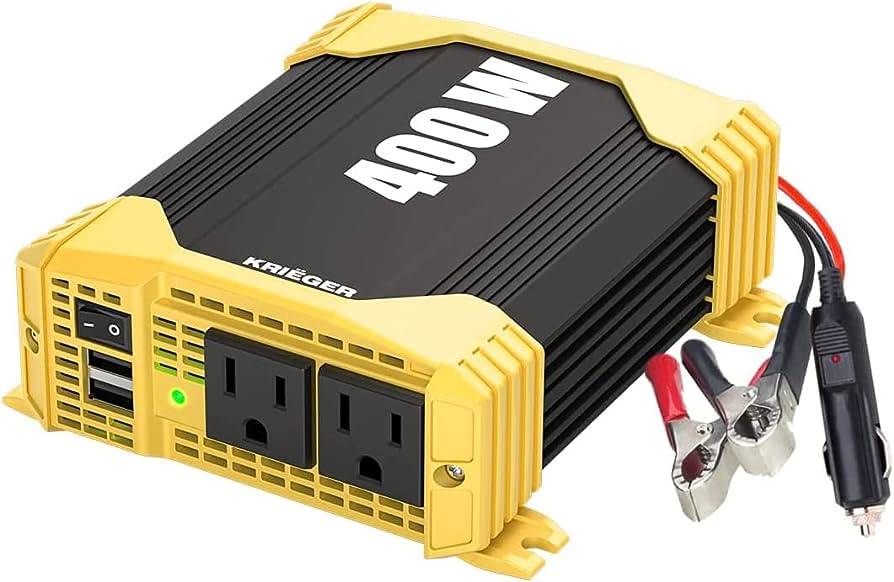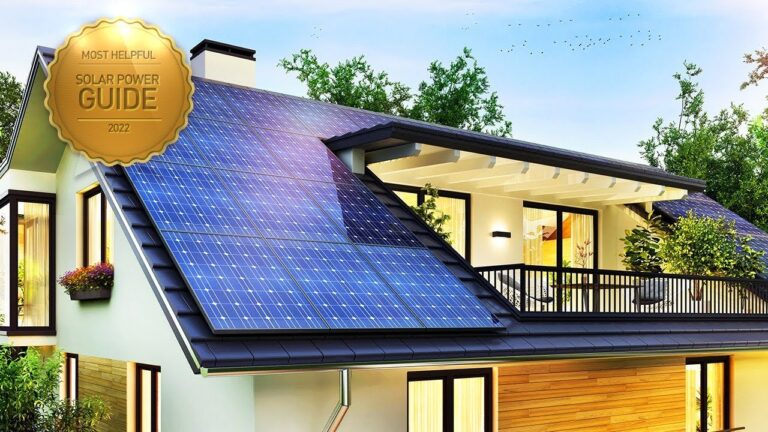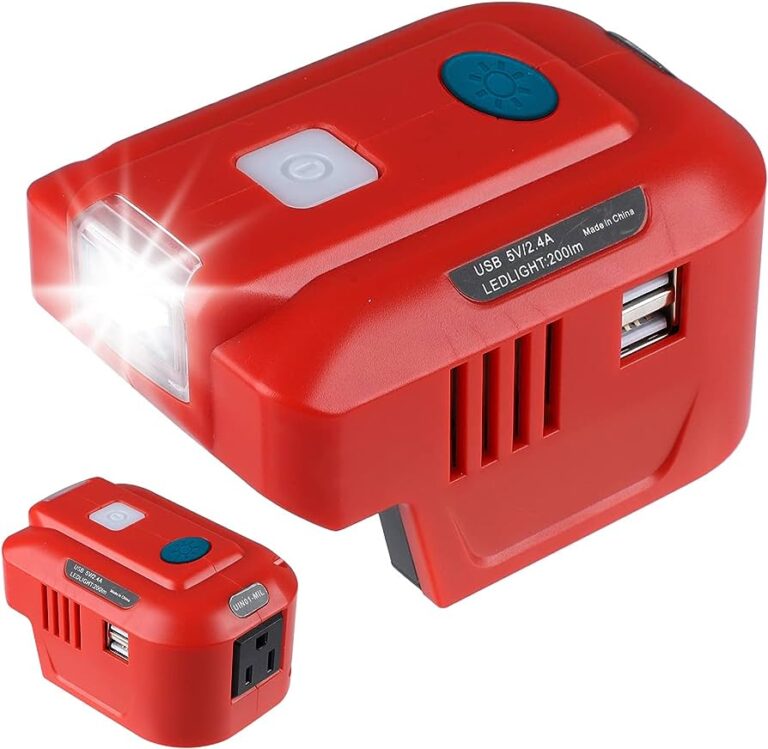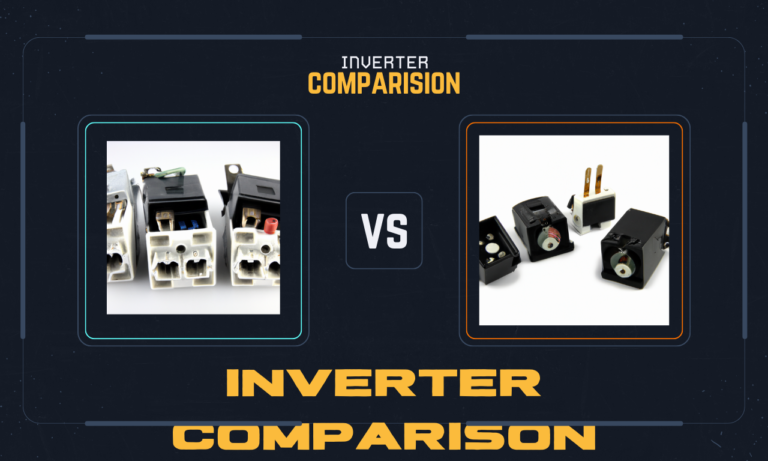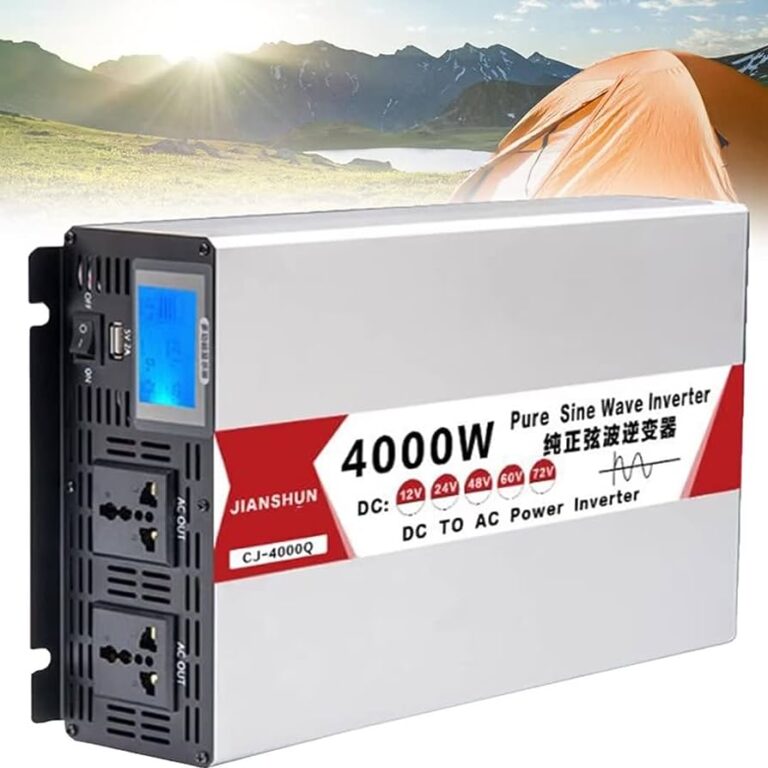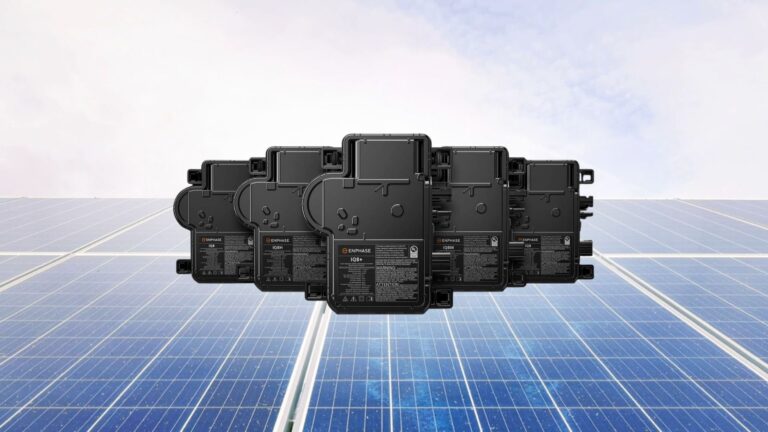What Size Inverter for 50 Amp RV? Power Up Your Road Trips!
For a 50 Amp RV, a minimum 4000-watt inverter is recommended. This size will provide enough power to run multiple appliances and devices simultaneously.
Choosing the right inverter size for your 50 Amp RV is crucial to ensure a seamless power supply on the go. Whether you’re planning a long road trip or simply need electricity while camping, having an appropriate inverter is essential.
An inverter converts DC power from your RV’s battery to AC power, allowing you to run various appliances and devices. With a 50 Amp RV, you’ll need a minimum 4000-watt inverter to meet your power needs. This size provides sufficient capacity to run multiple appliances simultaneously, such as air conditioners, refrigerators, microwaves, and other electrical devices. So, let’s delve deeper into the considerations and benefits of using a 4000-watt inverter for your 50 Amp RV.
Factors To Consider When Selecting An Inverter
When selecting an inverter for a 50 Amp RV, it is important to consider factors such as power capacity, voltage requirements, and the inverter’s ability to handle the specific load. Additionally, evaluating the inverter’s efficiency and safety features is crucial to ensure optimal performance and protection for your RV’s electrical system.
A proper selection will provide you with reliable power while on the road.
When it comes to selecting an inverter for your 50 Amp RV, there are several important factors that you should keep in mind. By considering these factors, you can ensure that you choose an inverter that meets your power needs and installation requirements.
Here are the key factors to consider:
Power Requirements Of Your Rv Appliances And Electronics
To determine the right size inverter for your RV, it’s crucial to calculate the power requirements of your appliances and electronics. This will help you understand how much wattage you need to run them efficiently. Consider the power consumption of devices like air conditioners, microwaves, refrigerators, televisions, and laptops.
Make a list of these items and note down their power ratings, usually measured in watts. By summing up these power ratings, you can determine the total wattage your inverter needs to provide.
Peak Voltage And Surge Power Capacity
In addition to the regular power requirements, it’s important to consider the peak voltage and surge power capacity of your RV appliances and electronics. Some devices require extra power during startup or have high voltage spikes, known as surge power.
To handle these sudden power surges, you’ll need an inverter with a sufficient surge power capacity. Be sure to check the surge rating of your devices and choose an inverter that can handle those spikes effectively.
Available Space And Installation Requirements
Every RV is different, and the available space for an inverter may vary. It’s essential to assess the available space in your RV and choose an inverter that fits well without causing any interference or inconvenience. Consider both the physical dimensions of the inverter as well as its installation requirements.
Some inverters may need additional ventilation or specific mounting orientations, so ensure that you have the necessary space and resources for proper installation.
To summarize, choosing the right size inverter for your 50 Amp RV involves considering the power requirements of your appliances and electronics, the peak voltage and surge power capacity, as well as the available space and installation requirements. By keeping these factors in mind, you can select an inverter that perfectly suits your RV’s needs and provides reliable power for your adventures.

Credit: www.nytimes.com
Understanding The Basics Of 50 Amp Rv Electrical Systems
Understanding the basics of a 50 Amp RV electrical system is crucial when determining the appropriate size inverter for your RV. With a solid understanding, you can ensure that your electrical needs are met efficiently and safely during your RV adventures.
The electrical system in your 50 Amp RV is the lifeblood that powers all your appliances and gadgets. It’s important to have a good understanding of how it works, especially when it comes to selecting the right inverter. In this section, we’ll explain the difference between 30 amp and 50 amp setups and highlight the importance of choosing the appropriate inverter for your 50 amp RV.
Explaining The Difference Between 30 Amp And 50 Amp Setups:
- A 30 amp RV setup:
- Limited power capacity: A 30 amp RV setup offers a maximum power capacity of 3,600 watts.
- Suitable for smaller RVs: This setup is commonly found in smaller RVs and pop-up campers.
- Power limitations: With a 30 amp setup, running multiple high-powered appliances simultaneously can overload the system.
- Limited appliance options: Due to the limited power capacity, you may have to be cautious about which appliances you run concurrently.
- A 50 amp RV setup:
- Higher power capacity: A 50 amp RV setup provides a maximum power capacity of 12,000 watts.
- Ideal for larger RVs: Larger and more luxurious RVs typically require a 50 amp setup to accommodate the increased power demand.
- Running multiple appliances: The higher power capacity allows for running multiple high-powered appliances simultaneously without overloading the system.
- More appliance options: With a 50 amp setup, you have a broader range of options when it comes to running various appliances.
Importance Of Inverter Selection For A 50 Amp Rv:
- Efficient power conversion: An inverter is responsible for converting DC power from your RV batteries to AC power for your appliances.
- Sufficient power capacity: A 50 amp RV requires an inverter that can handle the high power demand of multiple appliances running simultaneously.
- Surge protection: An inverter with built-in surge protection safeguards your RV’s electrical system against potential power surges.
- Compatibility with appliances: Ensure that the inverter you choose is compatible with the appliances you plan to run in your 50 amp RV.
- Energy efficiency: Select an inverter that maximizes energy efficiency to make the most of your RV’s battery power.
- Noise level: Consider an inverter that operates quietly to avoid disturbances while enjoying your RV experience.
- Ease of installation: Look for an inverter that is easy to install and integrates seamlessly with your RV’s electrical system.
Now that you have a better understanding of the 50 amp RV electrical system, it’s time to choose the right inverter that meets your power needs. Remember to consider factors such as power capacity, surge protection, compatibility, energy efficiency, and ease of installation.
Calculating Power Needs For Your 50 Amp Rv
Calculating the power needs for your 50 Amp RV requires determining the appropriate size inverter. Consider the electrical load and appliances to ensure a compatible power supply.
Determining the total wattage of all appliances and devices:
- Make a list of all the appliances and devices that you typically use in your RV.
- Find the power rating or wattage for each item. This information can usually be found on the product label or in the user manual.
- Add up the wattage for all the items on your list to get the total power consumption.
Factoring in startup and surge power requirements:
- Keep in mind that certain appliances, like air conditioners and refrigerators, require extra power to start up or during operation.
- Check the datasheets or product manuals of your appliances to determine their startup or surge power requirements.
- Add the maximum surge power requirements to your total power consumption to ensure your inverter can handle the peak loads without any issues.
Examining energy-efficient alternatives to minimize power consumption:
- Look for energy-efficient alternatives to power-hungry appliances.
- Consider replacing traditional incandescent bulbs with LED lights, which consume significantly less power.
- Opt for energy-efficient appliances and devices, such as air conditioners with high energy efficiency ratios (EER) or ENERGY STAR-rated products.
- Invest in solar panels to harness the power of the sun and reduce reliance on your inverter.
By calculating the power needs of your 50 Amp RV, factoring in startup and surge power requirements, and exploring energy-efficient alternatives, you can ensure that your inverter is sized appropriately and can meet the power demands of all your appliances and devices.
This will provide you with a reliable and efficient power source while enjoying the comforts of your RV.
Evaluating Different Inverter Types For Your 50 Amp Rv
Choosing the right inverter for your 50 Amp RV requires careful evaluation of different inverter types, considering factors like power needs, efficiency, and compatibility. Make an informed decision to ensure optimal power supply on your RV adventures.
If you’re looking to power your 50 Amp RV appliances while on the road, choosing the right inverter is crucial. Two types of inverters commonly used for RVs are modified sine wave inverters and pure sine wave inverters. Understanding the pros and cons of each type based on their performance, compatibility, and cost will help you make an informed decision.
Modified Sine Wave Inverters Vs. Pure Sine Wave Inverters
**Modified Sine Wave Inverters:**
- Crisp, clean power is not a priority: Modified sine wave inverters are more affordable compared to pure sine wave inverters and can adequately power many standard household appliances.
- Moderate compatibility: While modified sine wave inverters can run most appliances with resistive loads, they may not be suitable for more sensitive electronics or appliances with built-in motors (e.g., refrigerators).
- Budget-friendly: If you’re on a tight budget, a modified sine wave inverter can be a cost-effective choice, especially if you don’t heavily rely on appliances with sensitive electronics.
**Pure Sine Wave Inverters:**
- High-quality power output: Pure sine wave inverters produce a smoother and cleaner power output, similar to the power you get from utility companies. This makes them suitable for all types of appliances, including those with sensitive electronics or motors.
- Maximum compatibility: Pure sine wave inverters are universally compatible and can power virtually any appliance or electronic device you may have in your RV, ensuring optimal performance and longevity.
- Higher cost: Due to their advanced technology and superior power quality, pure sine wave inverters tend to be more expensive compared to modified sine wave inverters. However, the reliability and broader compatibility they offer justify the investment.
In determining which type of inverter is best for your 50 Amp RV, it’s important to consider the specific needs of your appliances. If you predominantly use standard household appliances without sensitive electronics, a modified sine wave inverter might suffice and save you some money.
However, if you have appliances with built-in motors or if you require high-quality power output for sensitive electronics, a pure sine wave inverter is the recommended choice, despite the higher cost. Ultimately, weighing the performance, compatibility, and cost factors will help you choose the most suitable inverter for your 50 Amp RV.
Finding The Right Size Inverter For Your 50 Amp Rv
Finding the perfect inverter size for your 50 Amp RV is crucial for seamless power supply. Ensure compatibility by selecting the right size inverter that meets the electrical needs of your recreational vehicle.
So, you’ve got a 50 Amp RV, and you’re looking for the perfect inverter to power all your electrical needs on the road. Finding the right size inverter is crucial to ensure that you have enough power without overloading your system.
Let’s dive into the key considerations and tips for choosing the ideal inverter for your 50 Amp RV.
Matching The Inverter’S Power Output With Your Rv’S Electrical System:
Here are a few important points to keep in mind when matching the power output of your inverter with your RV’s electrical system:
- Determine your power requirements: Start by assessing your RV’s power needs. Consider all the appliances and devices you plan to use simultaneously, such as air conditioners, microwaves, refrigerators, and other power-hungry equipment.
- Check your RV’s electrical system: Identify the maximum power capacity of your RV’s electrical system. Most 50 Amp RVs have a 120-volt AC system capable of delivering up to 6000 watts of power.
- Choose an inverter within your system’s limits: To prevent overloading your electrical system, select an inverter with a power rating that is lower than your RV’s maximum capacity. A good rule of thumb is to choose an inverter with 80% of your RV’s maximum power capacity. So, for a 50 Amp RV with a 6000-watt capacity, opt for an inverter around 4800 watts.
Understanding The Implications Of Overpacking Or Underutilizing Your Inverter’S Power Capacity:
When it comes to your inverter’s power capacity, it’s crucial to find the sweet spot between overpacking and underutilizing. Here’s why:
- Overpacking the inverter’s power capacity: If you choose an inverter with too high a power rating, it may seem like a good idea to have more power than you need. However, overpacking can lead to unnecessary costs, increased weight, and decreased efficiency.
- Underutilizing the inverter’s power capacity: On the other hand, selecting an inverter with insufficient power can limit your RV’s functionality. It may result in underpowered appliances, frequent tripping of the inverter, and possible damage to both the inverter and your RV’s electrical system.
To strike the right balance, consider the following tips:
- Assess your power needs: Make a list of all the appliances and devices you plan to use simultaneously. Calculate their power requirements and select an inverter that can comfortably handle that total load.
- Plan for future power needs: If you anticipate adding more power-hungry appliances or expanding your RV setup in the future, it’s wise to choose an inverter with a slightly higher power rating to accommodate those future needs.
Balancing The Need For Convenience And Power Consumption:
Finding the right size inverter for your 50 Amp RV is not just about matching power ratings; it’s also about managing your power consumption efficiently. Consider these aspects to achieve a balance between convenience and power usage:
- Opt for energy-efficient appliances: Choose appliances with lower power consumption to reduce strain on your inverter and increase overall energy efficiency.
- Utilize power management strategies: Implement power management techniques like staggering appliance usage or prioritizing essential appliances to prevent overloading the inverter and prolong battery life.
- Consider solar panels: If you want to reduce your reliance on the inverter and extend your power supply, solar panels can be an excellent addition to your RV energy system, providing clean and sustainable energy.
By carefully considering your RV’s power requirements, understanding the implications of overpacking or underutilizing your inverter’s power capacity, and balancing convenience with power consumption, you’ll be able to find the perfect size inverter for your 50 Amp RV. So, get ready to hit the road and enjoy all the creature comforts in your home away from home.
Essential Features To Look For In An Inverter For Your 50 Amp Rv
Finding the right inverter for your 50 Amp RV is crucial. Look for features like sufficient wattage capacity, pure sine wave output, multiple outlets, and easy installation to ensure smooth and reliable power conversion on your travels.
If you’re searching for the perfect inverter for your 50 Amp RV, there are a few essential features you should look for to ensure a convenient and safe experience. Here are some key aspects to consider:
Multiple Ac Outlets And Usb Ports For Convenient Charging:
- Multiple AC outlets: Look for an inverter that offers multiple AC outlets, allowing you to power multiple devices simultaneously. This feature is especially important when you have multiple appliances or gadgets that need to be connected.
- USB ports: A built-in USB port allows you to conveniently charge your smaller electronic devices, such as smartphones and tablets, without the need for an additional charger. Having USB ports on your inverter provides added convenience and saves space in your RV by eliminating the need for multiple charging adapters.
Built-In Safety Features Such As Overload Protection And Short Circuit Prevention:
- Overload protection: This safety feature is crucial to protect your RV’s electrical system from damage caused by excessive power draw. An inverter with built-in overload protection will automatically shut off or reduce output power when your devices draw too much electricity.
- Short circuit prevention: Look for an inverter that has short circuit prevention mechanisms in place. This feature safeguards your inverter and connected devices by automatically shutting down in the event of a short circuit, preventing any potential damage.
Remote Control And Monitoring Capabilities For Enhanced Convenience:
- Remote control: Opt for an inverter that provides remote control functionality. With a remote control, you can conveniently operate and adjust the inverter’s settings from a distance, eliminating the need to manually access the inverter.
- Monitoring capabilities: Some advanced inverters offer monitoring capabilities through smartphone apps or digital displays. This feature allows you to monitor the inverter’s status, power usage, and battery levels in real-time, giving you better control and ensuring optimal performance.
When choosing an inverter for your 50 Amp RV, it’s essential to consider features such as multiple AC outlets and USB ports, built-in safety features like overload protection and short circuit prevention, and the convenience of remote control and monitoring capabilities.
These features will enhance your RV experience and ensure efficient and safe power supply for all your devices and appliances.
Installation And Setup Considerations For Your Rv Inverter
Choosing the right size inverter for your 50 Amp RV requires careful consideration of installation and setup. Ensure the inverter can handle the power demands of your RV appliances and electronics, while also considering space constraints and installation requirements for optimal performance.
Ensuring Proper Wiring And Grounding For Optimal Performance
- To ensure your RV inverter functions at its best, proper wiring and grounding are essential. Here are some considerations to keep in mind:
- Use the right gauge wire: Use the appropriate gauge wire for your inverter installation. This will prevent voltage drop and ensure efficient power transfer.
- Follow the manufacturer’s guidelines: Consult the manufacturer’s specifications and guidelines for wiring your inverter. This will ensure compatibility and safe operation.
- Grounding the inverter: Proper grounding is crucial for safety and performance. Ensure that you follow the listed regulations and guidelines for grounding your inverter.
- Avoiding noise interference: Route your wiring away from any potential sources of electromagnetic interference, such as engine components or other high-power devices.
- Regularly inspect the wiring: Over time, vibrations and wear can impact the integrity of your wiring connections. Regularly inspect your wiring for any signs of damage or loose connections.
Integrating Your Inverter With An Automatic Transfer Switch
- Integrating your RV inverter with an automatic transfer switch (ATS) offers convenience and reliability. Here’s what you need to know:
- Seamless power transfer: An ATS automatically switches between shore power and inverter power, ensuring uninterrupted electrical supply to your RV.
- Proper installation: Follow the manufacturer’s installation instructions for integrating your inverter with the ATS. This will ensure a safe and reliable connection.
- Load management: Consider the total power demand of your RV appliances and devices. Ensure that the inverter’s capacity matches or exceeds the load to prevent overloading.
- Battery bank considerations: Assess the capacity and condition of your RV’s battery bank. Make sure it’s capable of providing sufficient power to support the inverter during periods of high demand.
- Automatic transfer switch compatibility: Verify that the ATS is compatible with the type of inverter you have. Some inverters may require specific ATS models for integration.
Following Manufacturer Guidelines For Safe And Secure Installation
- Adhering to manufacturer guidelines is crucial for the safe and secure installation of your RV inverter. Keep these key points in mind:
- Location considerations: Follow the manufacturer’s recommendations for the ideal location of your inverter. Factors such as ventilation, accessibility, and environmental conditions should be taken into account.
- Mounting requirements: Ensure that you securely mount your inverter according to the manufacturer’s instructions. This prevents unnecessary vibrations and damage during travel.
- Electrical connections: Follow the provided wiring diagrams and instructions for connecting the inverter to your RV’s electrical system. Incorrect connections can lead to malfunctions or safety hazards.
- Safety precautions: Prioritize safety by disconnecting the RV’s power source and battery before installation. Use appropriate personal protective equipment and tools while working with electrical components.
- Warranty considerations: Adhere to the manufacturer’s guidelines to maintain the warranty coverage of your inverter. Failure to follow installation instructions may void the warranty.
Remember, a properly installed and integrated RV inverter ensures a reliable power source for your adventures on the road. By following the guidelines provided by the manufacturer, you can enjoy the benefits of uninterrupted power in your RV.
Tips For Maximizing The Performance And Efficiency Of Your Inverter
To maximize the performance and efficiency of your inverter for a 50 Amp RV, it is crucial to carefully choose the right size inverter. Consider factors such as power requirements, appliances, and potential future upgrades to ensure optimal functionality and avoid any limitations.
If you own a 50 Amp RV, it’s crucial to have the right size inverter to ensure smooth operations and proper power supply. However, it’s not just about the size; you also need to optimize the performance and efficiency of your inverter.
Here are some practical tips to help you make the most out of your RV inverter:
Avoiding Excessive Power Draw And Overloading Your Inverter:
- Manage your power consumption: Be mindful of the appliances and devices you use simultaneously to avoid exceeding the power capacity of your inverter.
- Turn off unnecessary loads: When not in use, make it a habit to switch off lights, fans, and other electrical equipment that are consuming unnecessary power.
- Prioritize efficient devices: Invest in energy-efficient appliances and devices that consume less power while providing the same performance.
- Consider a power management system: Installing a power management system can help regulate and distribute power more effectively, preventing overloading your inverter.
Regular Maintenance And Inspection To Identify Any Issues Or Faults:
- Keep a maintenance schedule: Regularly inspect your inverter and other electrical components to ensure they are functioning optimally.
- Check for loose connections: Loose connections can lead to power wastage and decrease the efficiency of your inverter. Regularly check and tighten any loose connections.
- Clean your inverter: Dust and debris can accumulate over time, affecting the performance of your inverter. Clean it regularly to maintain its efficiency.
- Monitor battery health: A weak or damaged battery can strain your inverter. Monitor the battery’s health and replace it if necessary.
Investing In Energy-Efficient Appliances And Devices:
- Look for energy star ratings: Energy-efficient appliances and devices come with energy star ratings, indicating their efficiency levels. Opt for these to maximize power usage.
- Use LED lighting: Replace traditional incandescent lights with energy-saving LED bulbs. LEDs consume less energy while providing ample lighting.
- Consider solar-powered options: Solar panels and solar-powered devices can reduce your reliance on the inverter, resulting in overall energy savings.
By following these tips, you can enhance the performance and efficiency of your inverter, ensuring a seamless experience while using your 50 Amp RV. Remember, it’s essential to strike a balance between power consumption and responsible energy usage to make the most out of your RV inverter.
Common Troubleshooting Issues And Solutions With Rv Inverters
RV inverters can present common troubleshooting issues, but finding the right size inverter for a 50 Amp RV is essential to prevent power overload. Ensure seamless functionality by selecting an inverter that matches the appropriate power capacity for your RV’s electrical needs.
Identifying Common Problems Such As Excessive Heat Or Power Fluctuations:
- Excessive heat: One of the most common issues with RV inverters is excessive heat. This can be caused by various factors, such as overloading, poor ventilation, or a malfunctioning cooling system. If you notice that your inverter is getting extremely hot to the touch, it’s important to address this issue promptly to prevent further damage.
- Power fluctuations: Another common problem is power fluctuations, which can result in inconsistent or unreliable power supply to your RV appliances. This can be due to improper wiring, loose connections, or issues with the inverter’s internal components. Power fluctuations can not only be frustrating but can also damage sensitive electronics in your RV.
Steps To Troubleshoot And Resolve Issues On Your Own:
- Check the connections: The first step in troubleshooting is to ensure that all the connections are secure and properly tightened. Loose or corroded connections can cause erratic behavior in your inverter. Check the battery cables, input and output connections, as well as the grounding connections.
- Inspect for damage: Visually inspect the inverter for any signs of physical damage, such as burned components or melted wires. If you notice any damage, it’s best to seek professional assistance for repairs or replacements.
- Verify the battery voltage: Use a multimeter to check the voltage of your RV battery. A low or fluctuating battery voltage can affect the performance of your inverter. If the battery voltage is below the recommended level, recharge or replace the battery.
- Reset the inverter: Many inverters have a reset button that can be pressed to restore them to their default settings. Locate the reset button on your inverter and try resetting it. This may resolve minor issues or glitches.
- Update firmware: Some inverters can be updated with the latest firmware to address software-related issues. Check the manufacturer’s website for any available firmware updates and follow the instructions to update your inverter.
When To Seek Professional Assistance For Inverter Repairs Or Replacements:
- Persistent problems: If you have followed the troubleshooting steps mentioned above and are still experiencing issues with your inverter, it’s advisable to seek professional assistance. Persistent problems could indicate a more significant underlying issue that requires expert knowledge and equipment to diagnose and fix.
- Complex repairs: In cases where the inverter requires complex repairs, such as replacing internal components or repairing circuit boards, it’s best to leave it to the professionals. Attempting complex repairs without the necessary expertise can result in further damage or personal injury.
- Outdated or obsolete inverter: If your inverter is significantly outdated or obsolete, it may be more cost-effective to replace it rather than trying to repair it. A professional can help you assess the compatibility and recommend suitable replacement options.
Remember, troubleshooting and attempting DIY repairs should only be done if you are comfortable and have the necessary knowledge. If you are unsure or feel overwhelmed, it’s always recommended to consult a professional who can efficiently diagnose and resolve any issues with your RV inverter.
Frequently Asked Questions Of What Size Inverter For 50 Amp Rv
How Big Of An Inverter Do I Need To Run An Rv?
To run an RV, you need an inverter that can handle the power requirements. The size depends on the appliances and devices you plan to use. It’s important to consider the wattage of everything and choose an inverter that can handle the total load.
How Many Watt Inverter Do I Need For My Rv?
To determine the watt inverter needed for your RV, calculate the total wattage of all appliances and electronics you plan to use simultaneously while camping.
How Big Of An Inverter Do I Need To Run My Rv Ac?
To run your RV AC, you need an inverter that can handle the power requirement of the AC unit. The size of the inverter depends on the AC’s wattage.
Is A 2000 Watt Inverter Enough For Rv?
Yes, a 2000 watt inverter is sufficient for an RV. It can power basic appliances and electronics.
Conclusion
Choosing the right size inverter for a 50 Amp RV is crucial to ensure the smooth and efficient operation of your electrical appliances while on the road. By understanding the power requirements of your devices and calculating the total wattage needed, you can determine the appropriate size inverter for your RV.
It’s essential to consider both the continuous and surge power ratings of the inverter, as well as any additional features like built-in charging capabilities for your battery. Additionally, be mindful of the quality and reliability of the inverter brand you choose, as well as any safety features it may offer.
Remember to consult with professionals or refer to your RV’s user manual for specific recommendations when selecting the size inverter.

